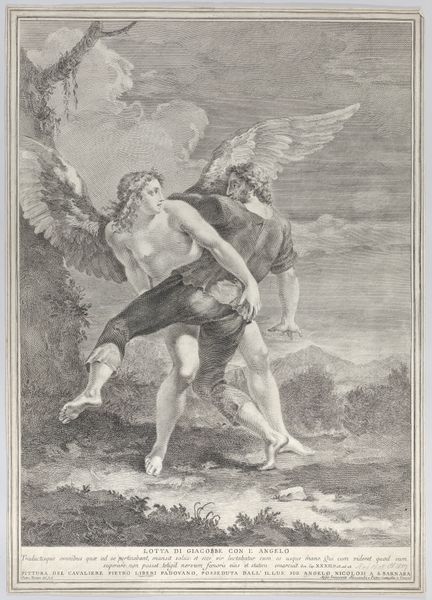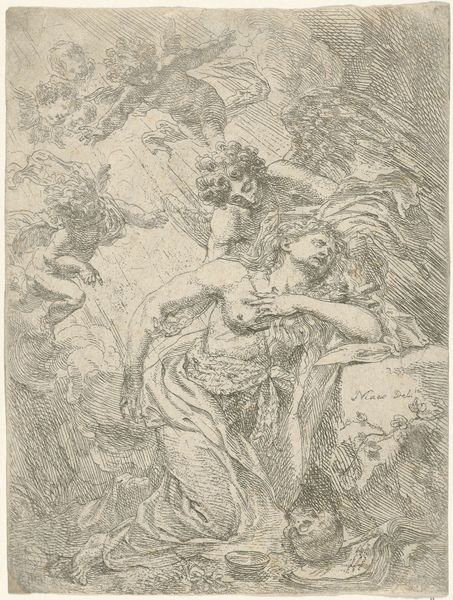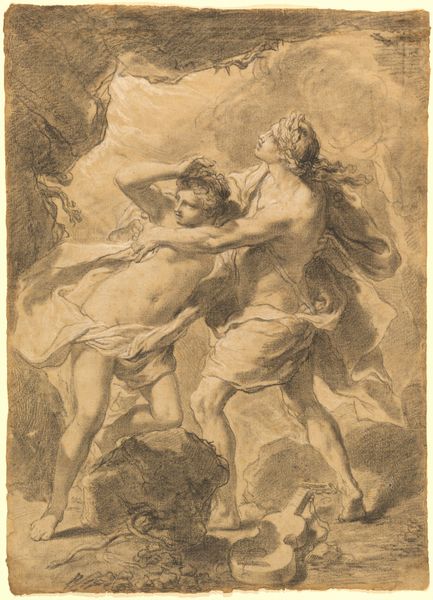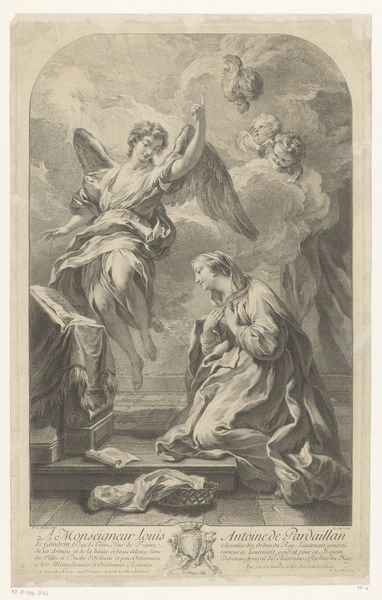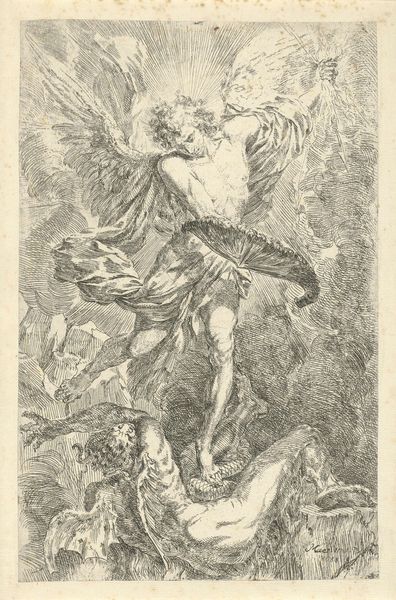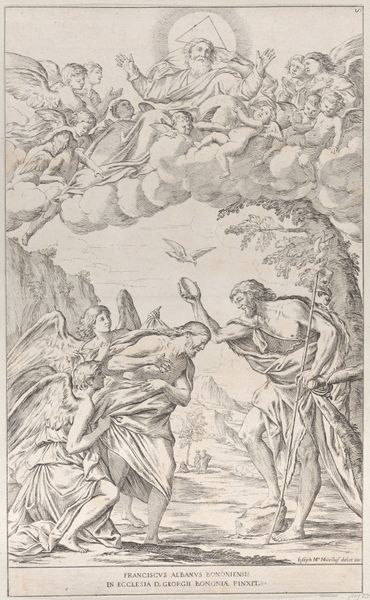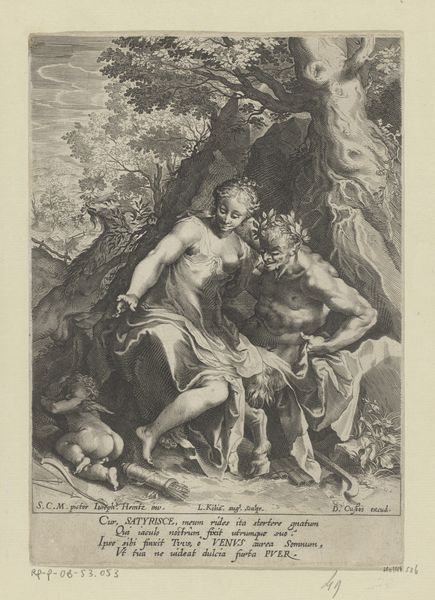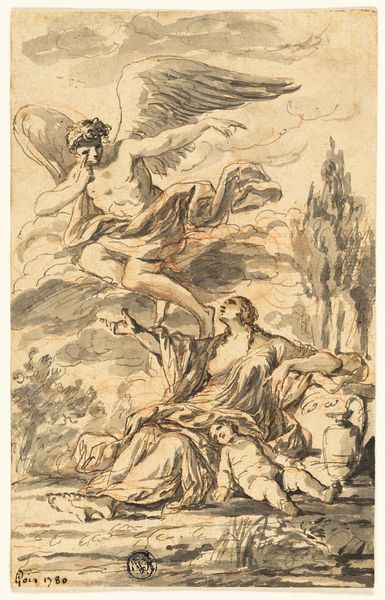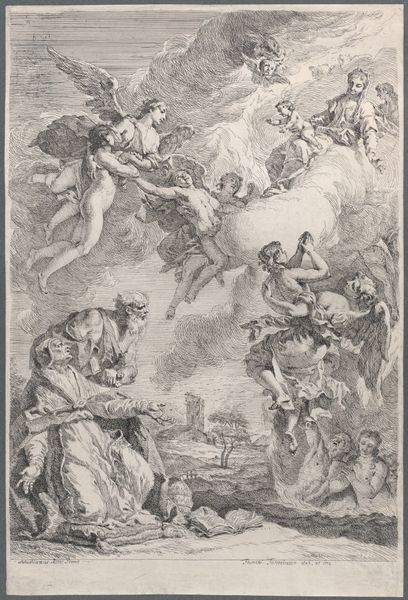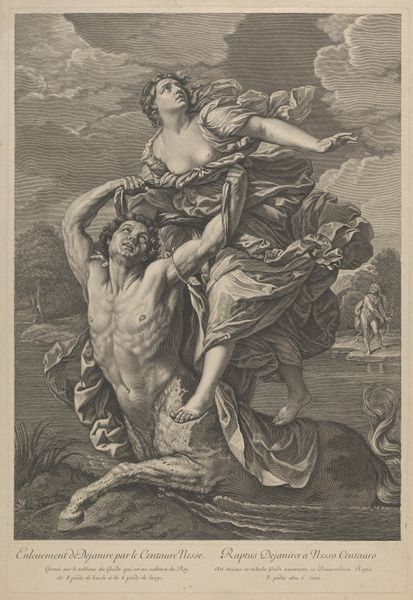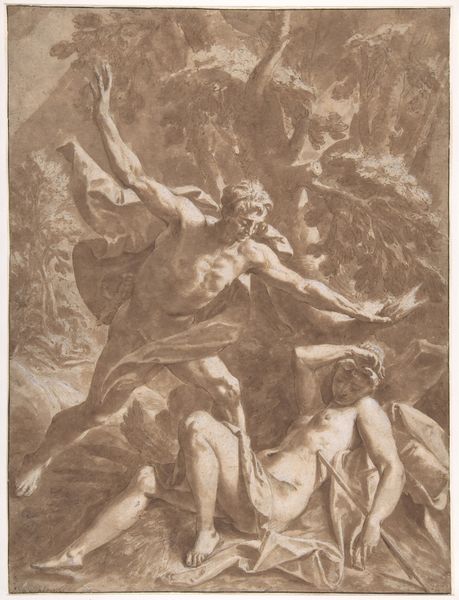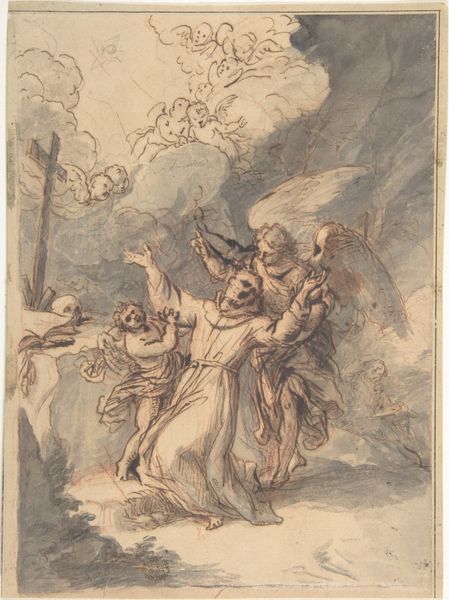
drawing, ink
#
drawing
#
allegory
#
narrative-art
#
baroque
#
pen sketch
#
figuration
#
ink
#
15_18th-century
#
history-painting
Copyright: Public Domain
Curator: This energetic pen and ink drawing, housed here at the Städel Museum, is titled *Jacob Wrestling with the Angel* by Gregorio Guglielmi, dating back to around 1760. The Baroque style lends itself so well to dramatic religious subjects. What springs to mind for you? Editor: It’s incredibly dynamic, isn't it? Even in this monochromatic palette, there's a raw sense of struggle and desperation in their intertwined forms. You feel the tension; it’s a truly visceral scene. Curator: Indeed. Guglielmi really captures that critical moment of challenge, both physical and spiritual. Jacob's story, in a psychological lens, explores our subconscious fight against destiny, isn’t it? In a world of societal transformation. Jacob’s insistence and perseverance resonate deeply, reflecting that era’s emphasis on individuals wrestling against preordained roles. Editor: I think there's a clear social commentary there too, given the context of 18th century Europe. Think of it as this individual, almost representing society, in conflict with this celestial figure. The social and religious constraints—the angel being God—are pushed by the individual that’s not following them. Curator: Precisely. And from an iconographic standpoint, the angel isn’t merely a divine messenger; it symbolizes an inner trial or, perhaps, the stern face of the law, if one thinks of Baroque interpretations. But the light—notice how the wash technique focuses the drama and almost equalizes the angel’s figure versus Jacob's grounded state? It is almost an affirmation rather than pure strife. Editor: It’s brilliant, this focus through chiaroscuro makes you consider what such imagery conveyed in the artistic circles. Was it meant as a genuine spiritual reflection, or also to signal a learned artist, aware of tradition but engaging in these more tumultuous discourses? Curator: Absolutely. It also brings to the forefront how Baroque art often served to bridge the mortal and the divine, intertwining faith, intellect, and that socio-political landscape, no? Editor: Exactly. Considering how it challenges interpretations. Its role, now, speaks volumes. Curator: Ultimately, Guglielmi's piece encourages us to confront those persistent, eternal struggles in our own lives. Editor: Wrestling our angels, I suppose, still a human imperative, it appears.
Comments
No comments
Be the first to comment and join the conversation on the ultimate creative platform.
